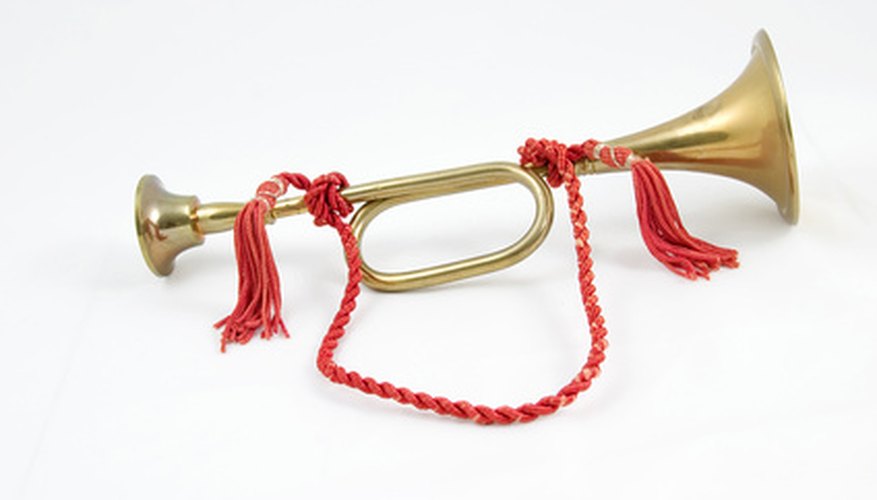Bugle music has been a part of our lives for centuries. Bugles have been used during war to alert the troops, at funerals to commemorate a soldier's life and most recently in jazz music and in drum and corps band competitions. Like all instruments, bugles must be tuned when playing solo or with other instruments. Most bugles have a tuning slide, although there are some older models that do not, relying entirely on the player's ear.
- Bugle music has been a part of our lives for centuries.
- Like all instruments, bugles must be tuned when playing solo or with other instruments.
Identify the type of bugle you are tuning. Bugles, like trumpets and other brass instruments, are created in a specific key. Manufacturers most typically make bugles in the keys of G or B flat.
Find the tuning slide. There is only one tuning slide on a bugle, whereas a trumpetr or French horn will have multiple tuning slides associated with valves. It is at the end of the lead pipe and sits across from the mouthpiece. The tuning slide can be closed or pulled out to adjust the pitch.
Use a piano or pitch pipe to tune the bugle. Depending upon the type of bugle, play a G or B flat. Play this note on the bugle. Use your ear to match the pitches and adjust the tuning slide until these notes sound identical.
- There is only one tuning slide on a bugle, whereas a trumpetr or French horn will have multiple tuning slides associated with valves.
- Use your ear to match the pitches and adjust the tuning slide until these notes sound identical.
Place one or two drops of tuning slide lubricant on the tuning slide if it is difficult to adjust. Do not add too much as the instrument will become excessively oily.
WARNING
Be sure to use proper tuning slide lubricant. Do not use any other lubricant, oil or vaseline as these may have an adverse affect on your instrument.
